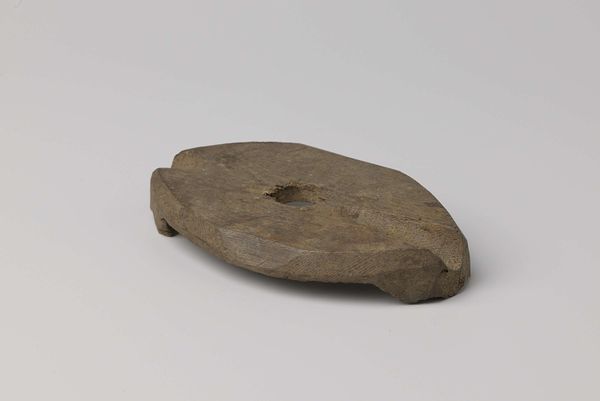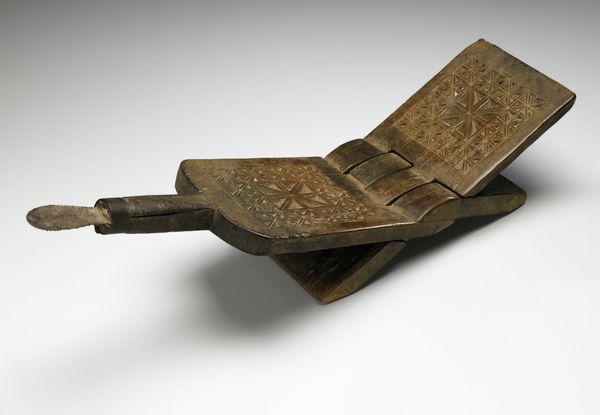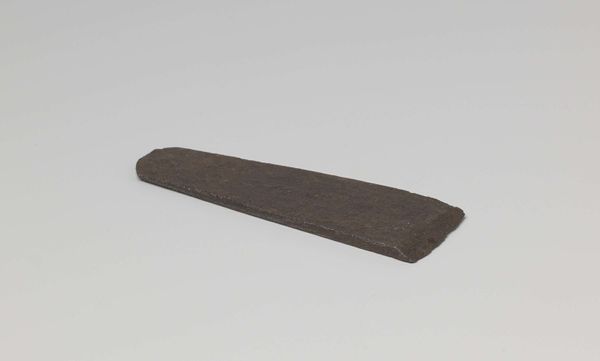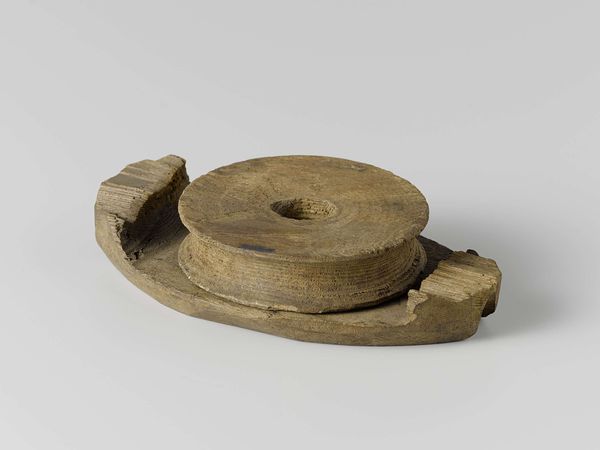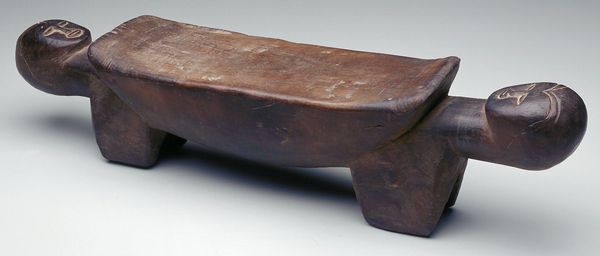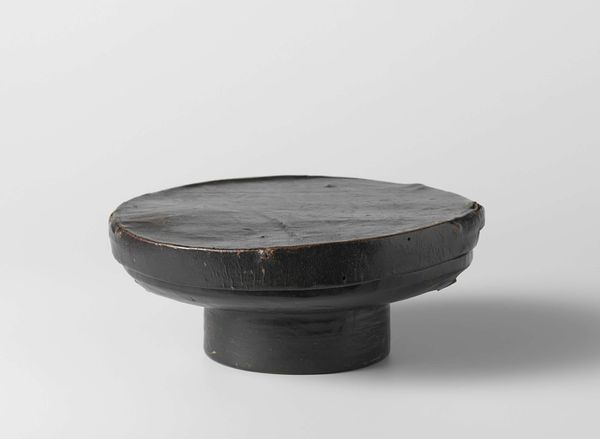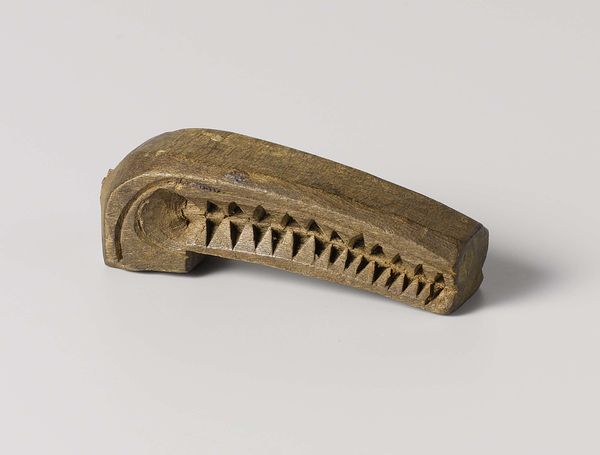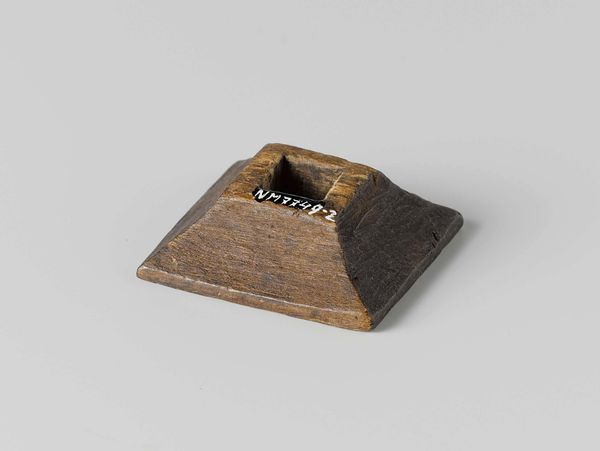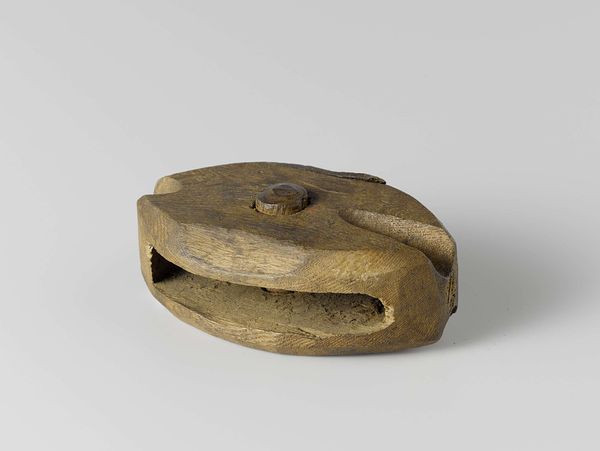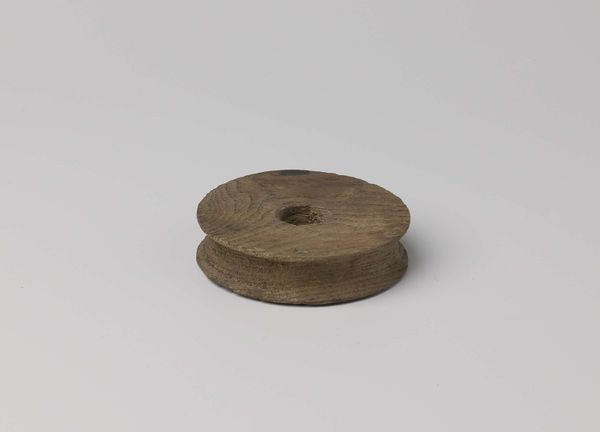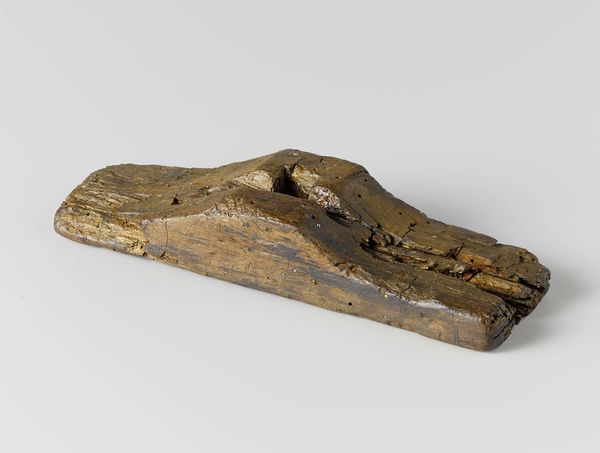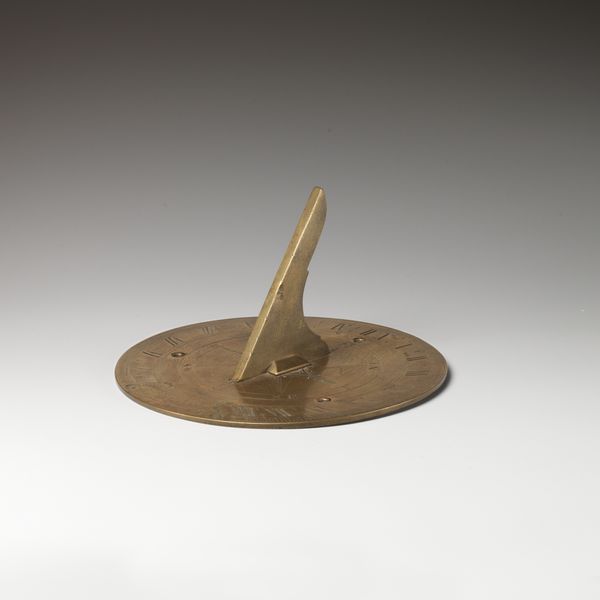
carving, relief, wood
#
medieval
#
carving
#
relief
#
form
#
11_renaissance
#
wood
Dimensions: height 18.6 cm, width 25 cm, depth 5 cm
Copyright: Rijks Museum: Open Domain
Editor: Here we have an artwork called "Fragment van omkasting of klos van slot," or "Fragment of casing or cleat of a lock," created around 1590-1596 by an anonymous artist. It is a carved wooden relief, and can be found at the Rijksmuseum. I'm immediately struck by how aged and weathered the wood looks. It has a tactile quality, despite the image. What stands out to you? Curator: I think your read on the material's aged quality is spot-on and extremely revealing. This fragment, originally part of a lock, speaks volumes about the 16th century. We are looking at more than just form, here; we are looking at questions around power, security, and control. Think about who would have commissioned such an object, what it protected, and what that protection signified in a society rife with inequalities. Editor: That's a fascinating perspective! I hadn't considered the implications of the lock itself. It highlights that even seemingly mundane objects can be deeply connected to social structures. Curator: Exactly. And we must question whose stories are deemed important enough to preserve and study. Were locks symbols of safety for the elite and barriers for those outside the protected class? Were craftspeople like the anonymous carver elevated as artists or just regarded as working-class labor? What biases influenced the decisions of a museum to choose it as culturally valuable to preserve? The lack of the carver's name is notable. Editor: So by examining a simple object, we can expose issues around access and privilege in the Renaissance era? Also, these questions extend to museums themselves, questioning what stories they tell through their collections. Curator: Precisely. This fragment becomes a portal to a complex web of historical, social, and political relationships. Thinking about our personal biases, too, and experiences affects our interpretation. Art history becomes a conversation, rather than a monologue. Editor: I never imagined a lock fragment could unlock so many questions about power and identity. Thank you for expanding my understanding of how to analyze art in context.
Comments
No comments
Be the first to comment and join the conversation on the ultimate creative platform.
